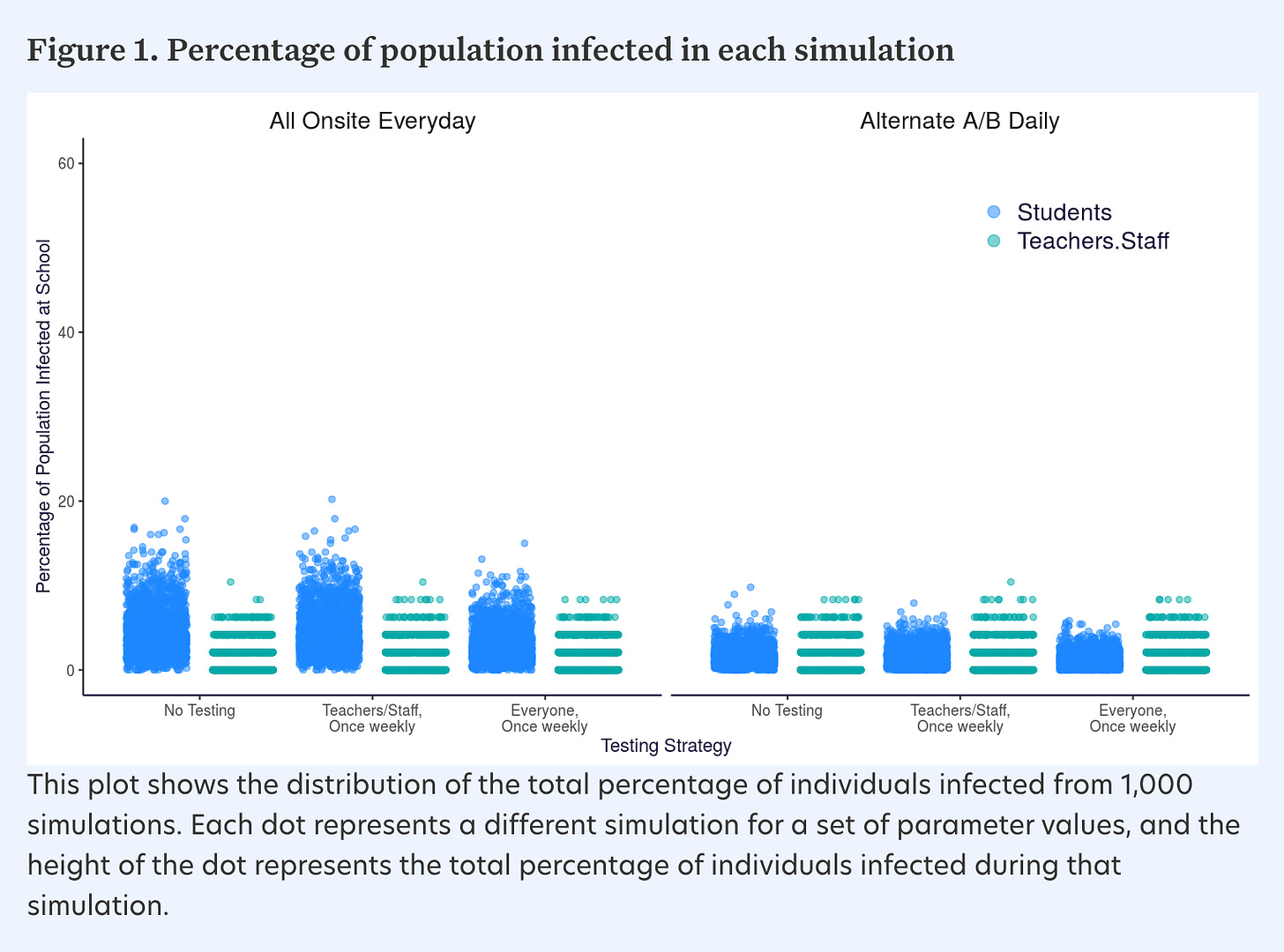Vaccinate the teachers and reopen schools
Welcome to Plugging the Gap (my email newsletter about Covid-19 and its economics). In case you don’t know me, I’m an economist and professor at the University of Toronto. I have written lots of books including, most recently, on Covid-19. You can follow me on Twitter (@joshgans) or subscribe to this email newsletter here.
We have come along way since May 2020. Governments now understand that reopening schools should be the priority before entertainment and other things. Why? Because it helps the children and because it helps their parents get back to work.
Then why, for goodness, sake aren’t governments taking that seriously when thinking about vaccination strategy? Thanks to Covid-19 sparing the kids and, indeed, not apparently making schools spreading sites, the barriers to reopening remain one thing: the teachers. Put simply, teachers are exposed at school in environments that are very conducive to picking up Covid-19 given that they are enclosed, poorly ventilated and used for long periods of time. To be sure, schools haven’t been major spreading sites but that doesn’t mean there isn’t risk.
Given that, there is an obvious solution. Vaccinate the teachers. That is the easiest way to remove the barrier. For instance, Ontario has around 130,000 full-time teachers. Below high school, there are 85,000 of them. Right now, vaccinating them would mean not vaccinating older people — unless there is overlap, of course. But, in contrast, to vaccinating older people, schools could reopen if this were done. Otherwise, schools will be disrupted until the fall and we can write off the rest of this year. By contrast, outside of LTC facilities, is there an advantage to vaccinating elderly people this month as opposed to next month?
A new paper does the maths to calculate the value of vaccinating teachers. It comes with a useful calculator. I used it here to calculate what happens under various scenarios for elementary schools. These outcomes are all for a six month period. First, here is what happens if we don’t vaccinate teachers and staff.
And here is what happens if we do.
The scales don’t quite match up but vaccination reduces teacher and student infections. Here is another way of looking at it. First, no vaccinations and then vaccinations.
If you vaccinate teachers and alternate daily schedules (as is done on Ontario), you basically prevent outbreaks in schools. Absent that the risk to both teachers and students is much higher. In the paper, a comparison figure is provided.
High schools have more possibilities for spreading and so there are higher rates of infection. But there, teachers are relatively more protected by vaccination so the case for vaccinating high school teachers is actually stronger. Importantly, to limit infections amongst students, regular testing (weekly) can do the job.
The point is that if you want to reduce the chances of teacher infection from 4 per cent to almost zero, vaccinating them is the best strategy. It achieves strong reductions than regular testing or dividing the schools and using daily rotation. Complement this with testing the students weekly and you can even have students back almost like normal.
What did I miss?
What cheeses me off








